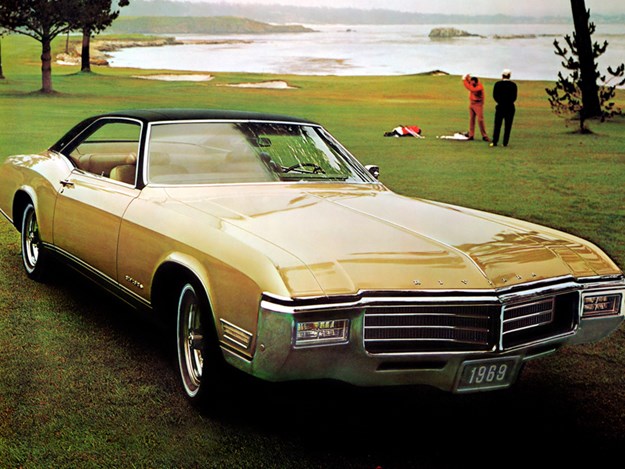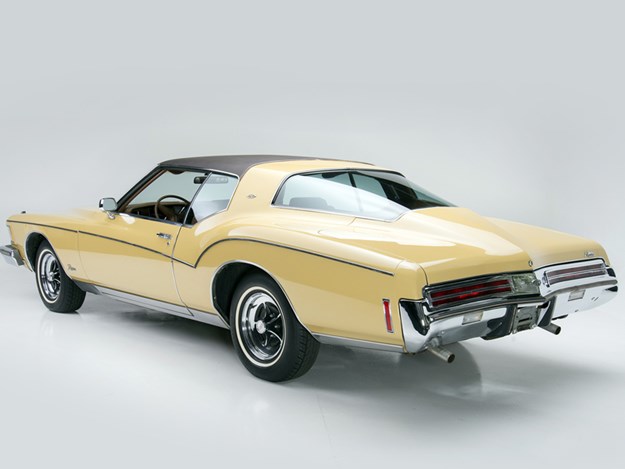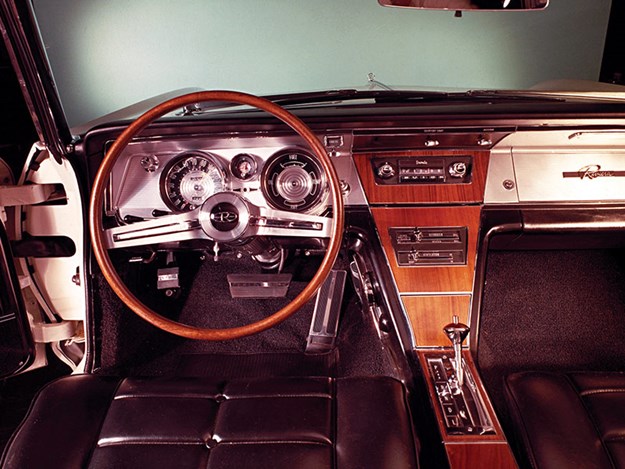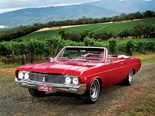1963-1974 Buick Riviera - Buyer's Guide



|
Mitchells' initial sketches all showed a car with concealed headlights
A car of the Riviera kind had been on General Motors’ agenda for a long time, but the need became urgent once Ford’s Thunderbird created demand for the 'personal car.’
Bill Mitchell, GM’s styling guru who had created the Chevrolet Corvette and `king-fin’ Cadillacs, envisaged his company’s T-Bird rival as an entry-level Cadillac, but instead it became a Buick.
Mitchell’s initial sketches all showed a car with concealed headlights – a throwback perhaps to Buick’s pre-WW2 `Y Job’ concept car – and when the Riviera appeared in September 1962 the vertical cages meant to cover the lights were there. So were four horizontally-paired headlamps slotted into the grille because It would take Buick’s engineers until 1964 to overcome problems with the `clamshell’ covers.

Small windows and minimal use of chrome were hallmarks of the Riviera design, but what really defined the handsome two-door was its `Coke-bottle’ hip beneath the rear roof pillar. This would become a feature of all 1960s GM models and find its way into the styling of rival brands too – most notably Ford with its Mustang.
| Read next: Buick Skylark review
Under its skin, the Riviera differed little from other Buicks. The 401 cubic inch (6.6-litre) engine was lifted straight from the sporty Wildcat, brakes were finned aluminium drums, the suspension used coils all round with Panhard rod location at the rear and a hefty anti-roll bar up front. The `Twin Turbine’ transmission was just an old two-speed Dynaflow unit, fitted to Buicks since 1947.
Despite its disadvantages, the two-speed transmission was useful in a country obsessed with standing-start acceleration. Rivieras with the standard engine would run 0-60mph (96km/h) in 7.8 seconds and do it without getting out of Low gear.

From 1964, a `Dual-Quad’ engine with twin four-barrel carburettors and 360bhp (268kW) became available. In 1965, the more powerful engine was offered as part of a $306 `Gran Sport’ option pack which also included a modified transmission and exhaust, limited-slip differential and simulated wire-spoke wheel covers.
For 1966 the Riviera received a total restyle with new knife-edged lines and an even beefier ‘hip’. Sales jumped from 34,500 in 1965 to more than 45,000 during the restyled car’s first year in the market and by 1969 would top 50,000.
Concealed headlights remained a feature but instead of hiding behind troublesome covers, they flipped up and under the bonnet when not in use. The 401 engine was dropped and in 1967 the 425 was enlarged to 430 cubic inches (7.1 litres).

Yearly restyles occurred until 1971 when the `Boat-Tail’ series appeared and remained in production until 1974. These were among the biggest Buicks ever built; 5.7 metres long and weighing 145kg more than the 1963 Riviera. To maintain respectable performance, a 455 cubic-inch (7.4-litre) V8 developing up to 246kW was standard. Stylist Mitchell was appalled, saying the Boat-Tail design turned his Riviera "from a speedboat into a tugboat." Nonetheless, sales dipped slightly to average 33,000 annually. The money asked for different models can vary significantly but actual values for excellent examples of most models hover at around $50,000, with 1968-70 models generally cheaper than earlier versions or the later Boat-Tail cars.
VALUE RANGE: Buick Riviera (1963-65)
Fair: $20,000
Good: $47,000
Excellent: $60,000
(Note: exceptional cars will demand more)

BUYER'S CHECKLIST:
Body & chassis
Rust attacks floor pans, the firewall, rear quarter panels and doors. Replacement floor sections are available but other parts will need to be repaired or sourced second-hand. The X-frame chassis is massive and shouldn’t be impossibly rusted unless the car spent time in snow-prone regions or immersed in water. Rust at the lower edge of rear pillars on vinyl roof cars is common. The doors will droop with age, but hinge pin kits cost $40 and new complete hinge sets (per side) at around $160 plus freight from various USA suppliers. When considering an early car, ensure that the light covers move easily and, from 1966-67, the lights appear quickly and in unison.
Engine & transmission
Overheating is the most frequently reported problem with early Riviera engines. Reasons include partially blocked radiators and drag from or failure of the clutch-activated engine fan. The fan itself should have seven blades and when spun by hand should only revolve once or twice. If it spins freely, the clutch unit in the fan boss needs replacement. Oil pump wear will produce oil aeration and low pressure in early cars. Early Dynaflow transmissions are difficult to replace and rebuild but the GM 400 three-speed fitted to later Rivieras is superb and almost indestructible. Check for dirty or leaking transmission fluid, especially in cars which haven’t been frequently used.
Suspension & brakes
The all-coil suspension is basic and robust but still subject to the problems which afflict large, heavy cars. Coil springs will sag with age so check ride height and signs of tyres fouling the front mudguards. Bushes and ball joints are all available and relatively cheap. Some Rivieras being sold in Australia were converted to right-hand drive many years ago, using components which were altered or replaced (sometimes with second-hand parts). These need to be checked professionally. The steering is intentionally light but excessive play is unacceptable. All-drum cars can quickly lose brake effectiveness and those with discs aren’t a lot better. Replacement brake parts aren’t expensive, and a car converted to discs is still preferable.

Interior & electrics
Rivieras are packed with electrical gizmos and can be an expensive nightmare if hard-to-replace items fail. Window motors are available, but the air-conditioning will likely be expensive to fix. The stylish, monogrammed radio can be replaced by an AM/FM copy. Buying an internally tatty Riviera is feasible but will take patience to restore. Reproduction headlining, seat and door trims are available, and a supplier called Carid specialises in authentic fabrics. Small items and instruments can normally be found online but secondhand.
1963-1974 Buick Riviera specs
PRODUCTION: 112,244 (1963-65) 227,669 (1966-70) 101,618 (1971-73)
BODY: Steel body with separate chassis two-door coupe
ENGINE: 6555, 6970, 7041 or 7458cc V8 with overhead valves and single downdraft carburettor
POWER & TORQUE – 268Kw @4400rpm, 630Nm @ 2800rpm (425 Gran Sport)
TRANSMISSION: 2 or 3 speed automatic
PERFORMANCE: 0-96km/h – 7.2 seconds, 0-400 metres – 15.5 seconds (425 Gran Sport)
SUSPENSION: Independent with wishbones, coil springs, telescopic shocks, anti-roll bar (f) live axle with coil springs, telescopic shocks, trailing arms, Panhard rod (r)
BRAKES: Disc or drum (f) drum (r) power assisted
TYRES: 8.45 x 15 crossply
From Unique Cars 461, Dec 2021
Unique Cars magazine Value Guides
Sell your car for free right here
Get your monthly fix of news, reviews and stories on the greatest cars and minds in the automotive world.
Subscribe

.jpg)



.jpg)









